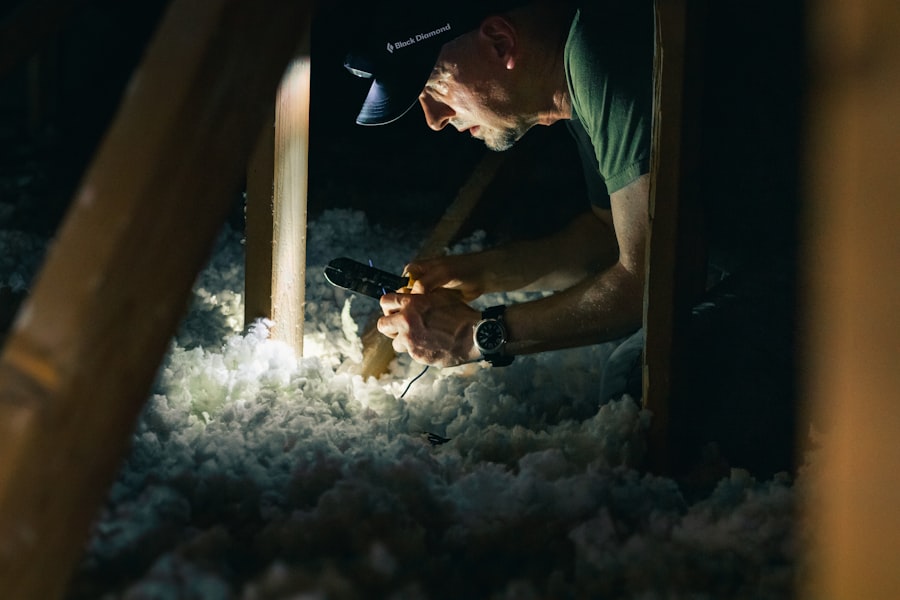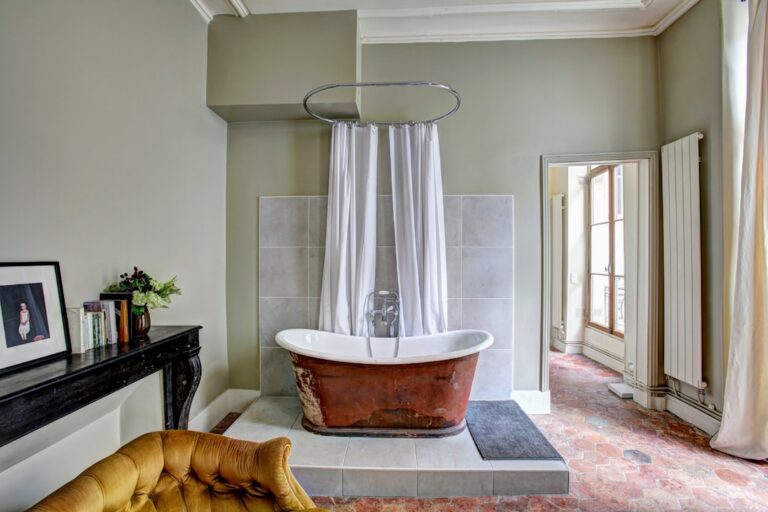Attic ventilation plays a crucial role in maintaining the overall health and efficiency of a home. It serves as a system designed to regulate temperature and moisture levels within the attic space, which can significantly impact the rest of the house. Proper ventilation allows for the exchange of stale, hot air with cooler, fresh air from outside, thereby preventing heat buildup during the warmer months.
This exchange is essential not only for comfort but also for protecting the structural integrity of the home. Without adequate ventilation, attics can become excessively hot, leading to a range of problems, including damage to roofing materials and increased energy costs. Moreover, effective attic ventilation contributes to the longevity of insulation materials.
When attics are poorly ventilated, moisture can accumulate, leading to condensation that can compromise insulation performance. This can create a cycle where homeowners find themselves needing to replace insulation more frequently, incurring additional costs. Understanding the role of attic ventilation is vital for homeowners who wish to maintain a comfortable living environment while also safeguarding their investment in their property.
Key Takeaways
- Proper attic ventilation is essential for maintaining a healthy and energy-efficient home.
- Inadequate attic ventilation can lead to increased energy costs and reduced comfort in the home.
- Proper bathroom ventilation is crucial for preventing mold, mildew, and maintaining good indoor air quality.
- Adequate bathroom ventilation can help prevent health issues and maintain a clean and hygienic environment.
- Choosing the right ventilation systems for attics and bathrooms is important for long-term home health and energy efficiency.
The Impact of Inadequate Attic Ventilation on Energy Efficiency
Increased Energy Bills and HVAC Strain
The increased workload not only leads to higher energy bills but can also shorten the lifespan of HVAC systems due to excessive strain. Homeowners may find themselves facing unexpected repair costs or even system replacements as a result of this added stress.
Risks of Ice Dam Formation
During the winter months, poor ventilation can lead to ice dam formation on roofs. When warm air escapes from the living areas into the attic, it can cause snow on the roof to melt and then refreeze at the eaves, creating ice dams that can damage roofing materials and lead to leaks.
A Critical Component of Energy Management
This cycle of heat buildup and moisture retention not only affects energy efficiency but also poses risks to the structural integrity of the home. Homeowners must recognize that investing in proper attic ventilation is not merely an aesthetic choice; it is a critical component of energy management and long-term home maintenance.
The Importance of Proper Bathroom Ventilation for Health and Hygiene

Proper bathroom ventilation is essential for maintaining health and hygiene within a home. Bathrooms are inherently humid environments due to activities such as showering and bathing, which can lead to excessive moisture accumulation if not adequately ventilated. This moisture creates an ideal breeding ground for mold and mildew, which can pose serious health risks, particularly for individuals with respiratory issues or allergies.
By ensuring that bathrooms are equipped with effective ventilation systems, homeowners can significantly reduce the likelihood of these harmful organisms taking hold. Furthermore, proper bathroom ventilation helps to eliminate unpleasant odors and improve indoor air quality. Stale air can linger in poorly ventilated bathrooms, leading to an uncomfortable experience for users.
A well-ventilated bathroom allows for fresh air circulation, making the space more inviting and pleasant. Homeowners should prioritize bathroom ventilation as part of their overall home maintenance strategy, recognizing its importance not only for comfort but also for the health and well-being of all occupants.
Preventing Mold and Mildew with Adequate Bathroom Ventilation
| Benefits of Adequate Bathroom Ventilation | Effects of Inadequate Ventilation |
|---|---|
| Prevents mold and mildew growth | Mold and mildew can cause respiratory issues |
| Reduces humidity levels | High humidity can damage paint, wood, and wallpaper |
| Improves air quality | Poor air quality can lead to allergies and other health problems |
| Extends the life of bathroom fixtures | Excess moisture can cause corrosion and deterioration |
The prevention of mold and mildew is one of the primary reasons why adequate bathroom ventilation is so critical. Mold thrives in damp environments, and bathrooms often provide the perfect conditions for its growth if moisture is not effectively managed. When steam from showers or baths is allowed to linger in the air without proper ventilation, it can condense on surfaces such as walls and ceilings, creating an environment conducive to mold development.
By installing exhaust fans or ensuring windows are opened during use, homeowners can significantly reduce humidity levels and minimize the risk of mold proliferation. In addition to preventing health hazards associated with mold exposure, adequate bathroom ventilation also protects the physical structure of the home. Mold can cause damage to walls, ceilings, and fixtures over time, leading to costly repairs and renovations.
Homeowners who invest in proper ventilation systems are not only safeguarding their health but also preserving their property value. Regular maintenance of these systems ensures they function effectively, providing long-term protection against mold and mildew.
The Connection Between Attic and Bathroom Ventilation
The connection between attic and bathroom ventilation may not be immediately apparent, yet both systems play integral roles in maintaining a healthy home environment. Both areas are susceptible to moisture buildup; attics can trap humidity from various sources within the home, while bathrooms generate moisture through daily use. When these two systems work in harmony, they create a balanced airflow that helps regulate humidity levels throughout the house.
Moreover, inadequate ventilation in one area can adversely affect the other. For instance, if an attic is poorly ventilated, it may lead to increased humidity levels that seep into living spaces, including bathrooms. Conversely, if bathrooms lack proper ventilation, excess moisture can rise into the attic space, contributing to condensation issues that compromise insulation and roofing materials.
Homeowners should consider both attic and bathroom ventilation as part of a comprehensive approach to home maintenance, ensuring that each system supports the other in promoting overall air quality and comfort.
Choosing the Right Ventilation Systems for Attics and Bathrooms

Ventilation Options for Attics
In attics, options like ridge vents, soffit vents, and gable vents are commonly used to facilitate airflow. Ridge vents allow hot air to escape from the peak of the roof, while soffit vents draw in cooler air from outside. This combination creates a natural flow that helps regulate temperature and moisture levels effectively. Homeowners should assess their specific attic design and climate conditions when choosing a system to ensure optimal performance.
Ventilation Solutions for Bathrooms
For bathrooms, exhaust fans are typically the most effective solution for managing humidity levels. When selecting an exhaust fan, homeowners should consider factors such as noise level, airflow capacity (measured in cubic feet per minute), and whether it includes features like humidity sensors or timers.
Proper Installation for Optimal Performance
Proper installation is also crucial; fans should be vented directly outside rather than into attics or crawl spaces to prevent moisture buildup in those areas. By carefully choosing and installing ventilation systems tailored to their needs, homeowners can enhance both comfort and health within their homes.
The Benefits of Proper Attic and Bathroom Ventilation for Homeowners
The benefits of proper attic and bathroom ventilation extend far beyond mere comfort; they encompass energy efficiency, health protection, and long-term cost savings. By ensuring that both areas are adequately ventilated, homeowners can significantly reduce their energy consumption during both summer and winter months. This translates into lower utility bills as heating and cooling systems operate more efficiently without excessive strain from trapped heat or humidity.
Additionally, proper ventilation contributes to a healthier living environment by minimizing the risk of mold growth and improving indoor air quality. Homeowners who prioritize these systems are investing in their family’s well-being while also protecting their property from potential damage caused by moisture-related issues. Furthermore, homes with effective ventilation systems often have higher resale values due to their enhanced comfort and reduced maintenance needs.
In essence, proper attic and bathroom ventilation is an investment that pays dividends in multiple ways.
Maintaining Proper Attic and Bathroom Ventilation for Long-Term Home Health
Maintaining proper attic and bathroom ventilation is essential for ensuring long-term home health. Regular inspections of ventilation systems should be part of any homeowner’s maintenance routine. For attics, this may involve checking vents for blockages caused by debris or insulation materials that could impede airflow.
Homeowners should also monitor for signs of moisture accumulation or mold growth within the attic space itself. In bathrooms, routine cleaning of exhaust fans is necessary to ensure they operate efficiently. Dust and grime can accumulate on fan blades over time, reducing their effectiveness in removing humid air.
Homeowners should also check ductwork for any obstructions that could hinder airflow outside. By committing to regular maintenance practices for both attic and bathroom ventilation systems, homeowners can enjoy a healthier living environment while protecting their investment in their property for years to come.
If you are dealing with inadequate attic or bathroom ventilation, you may also be interested in learning about the benefits of open concept versus defined spaces in your home. This article discusses the pros and cons of each design style and how it can impact the overall airflow and ventilation in your living space. Check out the article here for more information.
FAQs
What are the consequences of inadequate attic ventilation?
Inadequate attic ventilation can lead to a buildup of heat and moisture, which can cause damage to the roof, insulation, and structural components of the home. It can also lead to higher energy costs and reduced comfort inside the home.
What are the consequences of inadequate bathroom ventilation?
Inadequate bathroom ventilation can lead to the buildup of moisture, which can cause mold and mildew growth, as well as damage to the walls, ceilings, and fixtures in the bathroom. It can also lead to poor indoor air quality and potential health issues for the occupants.
How can inadequate attic ventilation be addressed?
Inadequate attic ventilation can be addressed by installing proper ventilation systems such as ridge vents, soffit vents, gable vents, or attic fans. It is important to ensure that the ventilation system is properly sized and installed to effectively remove heat and moisture from the attic space.
How can inadequate bathroom ventilation be addressed?
Inadequate bathroom ventilation can be addressed by installing or improving the existing exhaust fan to effectively remove moisture from the bathroom. It is important to ensure that the exhaust fan is properly sized and vented to the outside of the home to prevent moisture buildup.
What are the benefits of proper attic and bathroom ventilation?
Proper attic and bathroom ventilation can help to prevent damage to the home’s structure, improve indoor air quality, reduce energy costs, and increase overall comfort for the occupants. It can also help to extend the lifespan of the roof and other building materials.






